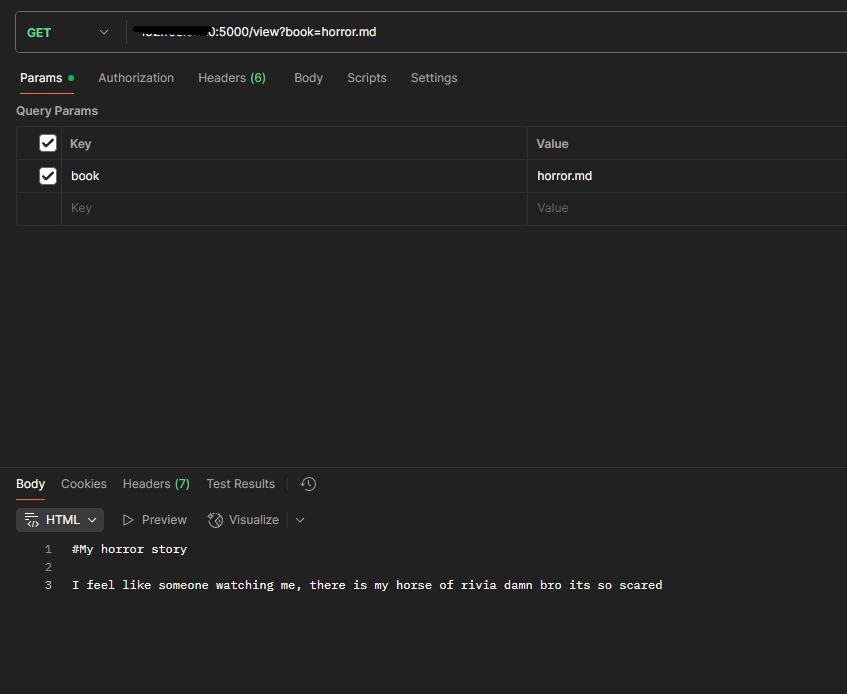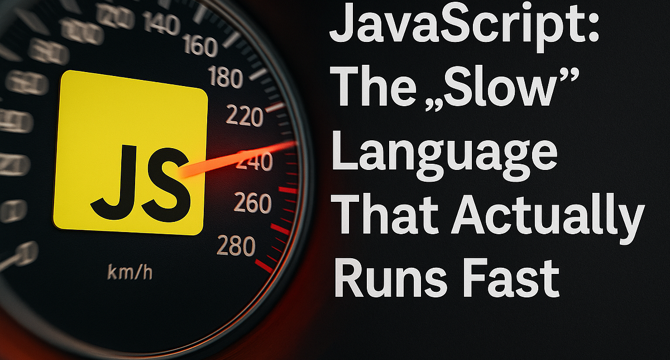Programming News
Dev
299

Image Credit: Dev
Building an AI Voice Assistant in 1 Minute (Mac Terminal)
- To build an AI Voice Assistant in MacOS Terminal, the process involves using OpenAI models like Whisper for speech-to-text conversion, GPT for text processing, and TTS for text-to-speech conversion.
- The setup includes exporting the OpenAI API key and running commands to record audio, convert it to text using Whisper model, process the text with GPT-3.5, and stream back the reply as speech.
- By creating a script named assist.sh, users can easily record audio, transcribe it, chat with GPT, and convert the output to speech using the TTS API. The script automates the entire process.
- The AI assistant built within MacOS Terminal can be extended for various functionalities like listening until silence, using hot-keys for activation, or integrating with an express server for better control and streaming on embedded devices.
Read Full Article
18 Likes
Medium
52

Image Credit: Medium
Building a CTF Lab with LFI bug vulnerability using ExpressJS
- Building a Capture The Flag (CTF) Lab with Local File Inclusion (LFI) bug vulnerability using ExpressJS.
- Testing LFI bug vulnerability with requests like /view?q=../../../../../etc/passwd.
- Combining the LFI bug with the interface, creating a simple page listing different books.
- Successfully resolving issues with rendering packages, fixing errors, and demonstrating the working LFI bug.
Read Full Article
3 Likes
Dev
248

Image Credit: Dev
You're Still Using Just One Type of Breakpoint?
- Developers often rely on basic breakpoints but there are more advanced options available in modern debuggers.
- Conditional breakpoints allow debugging based on specific conditions, like stopping only when a certain variable equals a particular value.
- Tracepoints or Logpoints enable printing messages without pausing the program, useful for observing code flow without interruptions.
- Other advanced breakpoints include Temporary Breakpoints, Dependent Breakpoints, and Data Breakpoints for more efficient debugging.
Read Full Article
10 Likes
Dev
102

Image Credit: Dev
Safe Data Practices for AI Training & Inference | AI Security series
- AI Security series is focusing on safe data practices for AI training and inference, emphasizing the importance of data security in building trustworthy AI systems.
- Data plays a crucial role in AI, where threats like training data leaks, data poisoning, inference-time attacks, and logging leaks can compromise the system's integrity.
- Best practices include anonymizing user data, validating and sanitizing inputs, limiting memorization, versioning and auditing datasets for training, and implementing input filtering, token limits, response monitoring, and data logging precautions for inference.
- Tools like Presidio, Cleanlab, TextAttack, Datasette, along with suggestions for fine-tuning with user support tickets and custom data guards for pipelines, can enhance data security practices in AI applications.
Read Full Article
6 Likes
Discover more
- Software News
- Web Design
- Devops News
- Open Source News
- Databases
- Cloud News
- Product Management News
- Operating Systems News
- Agile Methodology News
- Computer Engineering
- Startup News
- Cryptocurrency News
- Technology News
- Blockchain News
- Data Science News
- AR News
- Apple News
- Cyber Security News
- Leadership News
- Gaming News
- Automobiles News
Medium
639

Image Credit: Medium
JavaScript: The “Slow” Language That Actually Runs Fast
- JavaScript has a contradictory reputation - powering websites efficiently while being perceived as slow by some developers.
- The language was created in just 10 days in 1995, intended as a lightweight scripting language for web browsers, with its expanded usage beyond that not initially foreseen.
- Despite not being built for performance, JavaScript can be optimized for speed through the right mindset, tools, and coding patterns.
- Developers can enhance JavaScript performance by employing efficient practices to overcome its initial limitations.
Read Full Article
25 Likes
Dev
299

Image Credit: Dev
Workflows Are Not AI Agents: Selling Lies
- The claim of Zapier having '800+ AI agents' is deemed absurd, implying the marketing of workflows as AI agents.
- Real AI agents are not mere parsers but sophisticated models capable of making decisions in real-time.
- An AI agent orchestrates decisions, handles errors, and adapts to unpredictable situations with dynamic decision-making.
- Traditional workflows lack the thinking and adaptability inherent in true AI agents.
- Language models like LLMs can be taught to return structured data like JSON, enabling dynamic decision-making.
- Teaching LLMs to output structured data in JSON format allows for more intelligent interactions and reasoning.
- The 'Read File' tool pattern exemplifies the interaction between developers, models, and structured data output by LLMs.
- True agency in AI models emerges when they can handle dynamic and unpredictable scenarios, not just follow predefined workflows.
- Contrasting workflows with agents, it's emphasized that workflows follow a predetermined structure, while agents exhibit adaptive reasoning.
- Selling '800 agents' is akin to marketing workflows, as a real agent would be a single model with adaptive tools rather than multiple individual agents.
- The recommendation is to accurately label workflows as workflows to avoid misleading marketing claims in the AI space.
Read Full Article
18 Likes
Medium
123

Image Credit: Medium
The Role of Appearance vs. Personality in Professional Success
- First impressions are often based on appearance, but personality ultimately plays a more crucial role in professional success.
- Appearance is like a visual resume that helps in initial recognition, but long-term success is determined by behavior, attitude, and values.
- Studies indicate that traits like trustworthiness and competence are evaluated after the initial impression, focusing more on personality than looks.
- Skills and personality traits hold more value in the long run compared to appearance, highlighting the importance of consistency, clarity, and behavior in professional and social interactions.
Read Full Article
7 Likes
Medium
13

Image Credit: Medium
Why Go Is Sticking With Its Error Handling Syntax?
- Go programmers find the error handling syntax in Go too verbose.
- The Go team officially announced that they will not introduce new proposals for error handling syntax.
- The familiar line 'if err != nil { return err }' will continue to be used in Go code.
- Despite multiple attempts over seven years, the Go team has not been successful in simplifying error handling syntax.
Read Full Article
Like
Dev
415

Image Credit: Dev
💼💰 Financial Wisdom for Software Engineers: Build Code, Build Wealth
- Software engineers are advised to pay attention to their financial future and implement effective financial habits tailored for tech professionals.
- Key financial habits include automating savings, tracking net worth, understanding ESOPs, avoiding lifestyle inflation, analyzing buying vs. renting, learning about finance, and exploring alternate income sources.
- Automate savings like CI/CD pipelines, track net worth like app metrics, understand ESOPs vesting schedule and taxes, avoid lifestyle inflation by investing wisely, analyze the pros and cons of buying vs. renting a house.
- Additionally, software engineers are encouraged to learn about finance, think beyond their salary by exploring alternate income sources, and apply their mastery in systems and logic to build wealth and financial freedom.
Read Full Article
24 Likes
Dev
255

Image Credit: Dev
⚡ Supercharge Your Python Learning with These 9 Weekly Newsletters
- Python Trending Weekly, a paid newsletter, stands out for its thorough descriptions, curated compilations, and reasonable pricing, earning a top recommendation.
- Python Weekly, an OG newsletter since 2012, offers a mix of content with some inconsistency but impressive longevity, receiving a high rating.
- Pycoder's Weekly, known for effort in descriptions and featuring exclusive content, is appreciated for its quality and connection to Real Python.
- Python Hub Weekly Digest excels in curation with a clean design, mixing popular and older content, making it a recommended choice.
- Django News focuses on Django-related content, monetizing through ad pricing transparency, and targeting a niche audience effectively.
- Python on Microcontrollers Newsletter caters to hardware enthusiasts, covering IoT and single-board computers, filling a niche in Python newsletters.
- This Week in Python offers a simple format with no ads, showcasing genuine enthusiasm from the creator despite minimal formatting.
- Python weekly newsletter prioritizes quantity over quality, aggregating content from various sources, with inconsistent quality.
- Awesome Python Weekly, with a long operation history but limited quality and ads, is rated as questionable for its confusing content mix.
- Diverse Python newsletters provide varied content approaches, from automation to quality focus, catering to different preferences of users.
Read Full Article
15 Likes
Dev
286

Image Credit: Dev
Volatility-Based Decomposition: A System Design Example
- In system design, following rules and eventually bending them is key to expertise.
- Volatility-based decomposition is explored in this article to illustrate its benefits over functional decomposition.
- Functional decomposition can lead to flaws like clients taking on business logic responsibilities, creating maintenance and scalability issues.
- Volatility-based decomposition considers aspects like user volatility, client application needs, security procedures, notifications, storage, connections, trade items, workflows, and market feed sources.
- Identifying volatilities allows for component decomposition, ensuring flexibility and adaptability in the design.
- Components like Data Access, Storage, Notification Utility, Trade Workflow, Analysis Workflows, Feed Access, and Clients play vital roles in a volatile-based trading system design.
- Decomposing systems based on volatility reduces coupling between services and enables easier adaptation to changes and new requirements.
- The article emphasizes the importance of breaking systems based on volatility rather than function and introduces new rules to follow while designing systems.
- Readers are encouraged to follow future articles for more in-depth discussions on system design principles and volatility-driven decomposition.
- Understanding and applying volatility-based decomposition principles can lead to more robust and scalable system designs.
- Stay tuned for more insights into effective system design practices in upcoming articles.
Read Full Article
17 Likes
Medium
26

Vibe Coding: A Developer’s Take
- Developers often face distractions and doubts while coding, leading to feelings of inadequacy and lack of motivation.
- The concept of 'vibe coding' suggests waiting for the perfect mood to work, but real growth comes from discipline and consistency.
- Relying solely on vibes may hinder success in team projects that require communication and collaboration.
- Combining motivation with discipline and balance is key for long-term success in coding, despite the inevitable challenges and setbacks.
Read Full Article
1 Like
Medium
387

Image Credit: Medium
5 Projects You Can Build to learn Android App Development in 2025
- Learning any programming language requires practice and building real-world projects to gain experience.
- This article focuses on learning Android app development through practical projects in 2025.
- Building Android apps requires hands-on practice rather than just watching tutorials or reading materials.
- Projects help solidify knowledge and showcase practical application of concepts in Android development.
- Recommended starting with simple projects like a weather forecasting app connected to openweathermap.org API.
- Udemy courses like 'The Complete Android 14 & Kotlin Development Masterclass' offer guidance on building a weather app and more.
- The listed projects include a weather app, to-do list app, quiz app, music player app, and recipe app for beginners.
- Building a portfolio of Android apps through projects can enhance one's career prospects in the tech industry.
- Practicing and experimenting with different functionalities is crucial to becoming proficient in Android app development.
- Projects provide opportunities for innovation and creativity in Android app development, offering valuable learning experiences.
Read Full Article
23 Likes
Dev
114

Image Credit: Dev
Decoding the World: An Introduction to Machine Learning Paradigms
- Machine learning is a transformative technology that consists of different paradigms or fundamental approaches—supervised learning, unsupervised learning, and reinforcement learning.
- Supervised learning involves learning with labeled examples, making it useful for tasks like image classification, spam detection, and medical diagnosis.
- Unsupervised learning explores data without labels to discover hidden patterns, useful in areas like customer segmentation and anomaly detection.
- Reinforcement learning involves learning through trial and error, making it suitable for applications like robotics control, game playing, and personalized recommendations.
Read Full Article
6 Likes
Dev
330

Image Credit: Dev
🏢 Multi-Tenant Image Uploads to S3 via a Generic API Gateway in NestJS
- Learn how to build a scalable, multi-tenant image upload system in NestJS using an API Gateway and Amazon S3.
- The system architecture involves Client ➜ API Gateway ➜ Consumer Backend ➜ Amazon S3.
- Key goals include keeping the upload API generic, scoping files in S3 based on tenantId and customerId, and routing requests dynamically using a Gateway Proxy Service.
- Overall, the approach offers a scalable, maintainable foundation for handling user uploads in multi-tenant environments, suitable for various applications like SaaS platforms, consumer apps, and enterprise tools.
Read Full Article
19 Likes
For uninterrupted reading, download the app